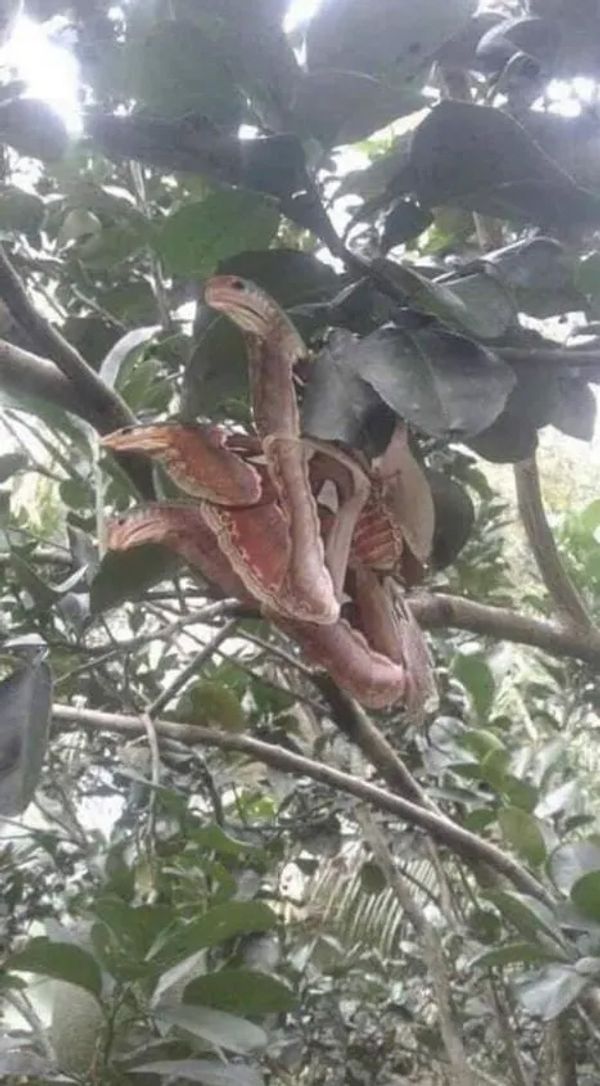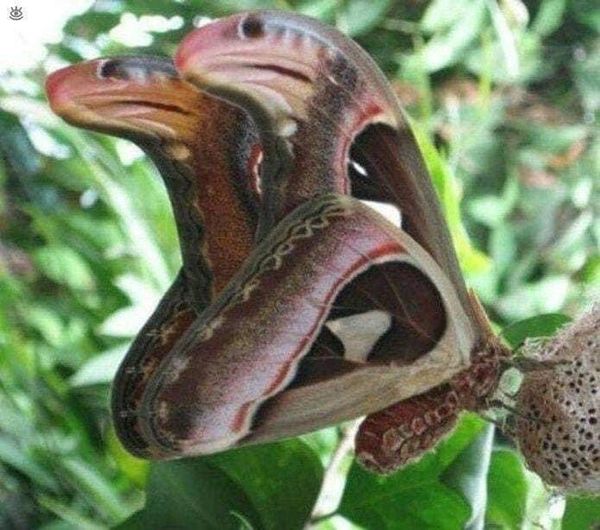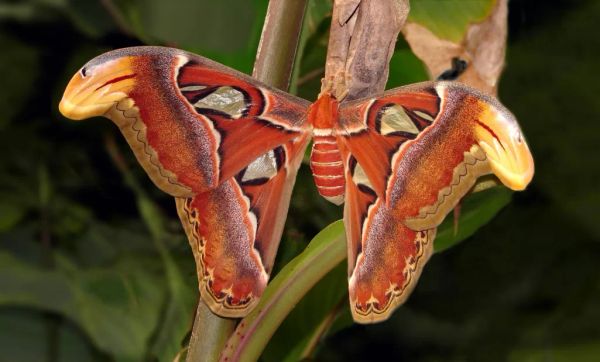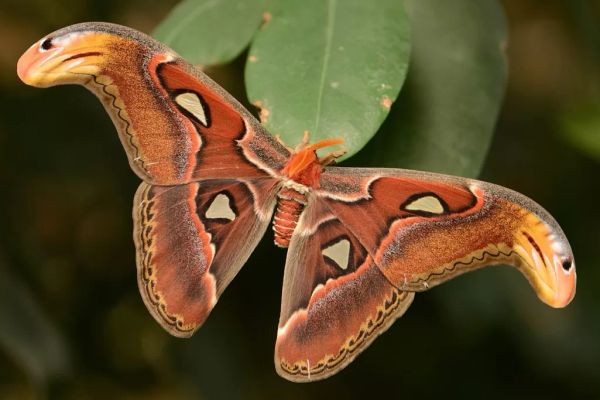The natural world is full of wonder and surprises. As we marvel at the incredible diversity of species on our planet, it’s fascinating to observe how these organisms interact and adapt to their environments. Recently, a set of captivating images emerged, showing what appeared to be three angry snakes hiding in a tree. These pictures intrigued many, including myself, but as it turns out, there’s more to this story than meets the eye.

The phenomenon of millions of species coexisting and fulfilling specific roles within their habitats is known as biodiversity. It’s a testament to the intricate balance of nature. The adaptations and survival techniques that different animals and plants have developed over time are truly remarkable. For example, some insects have evolved camouflage colors to blend in with their surroundings, while others have developed toxic compounds to ward off predators.

One such astonishing adaptation was showcased in the viral images of the “angry snakes” in a tree. In 2021, a photo shared on Twitter by Rob Allam left users puzzled and intrigued. It seemed to display three angry-looking “serpents” hiding among the branches. However, it didn’t take long for internet sleuths to unravel the truth behind the illusion.

Contrary to their appearance, the trio of “snakes” were actually pieces of wings from two different species of the Atlas moth. When positioned together, they created the illusion of snakes. The Atlas moth is a remarkable insect found in the forests of Asia. It is one of the largest species of Lepidoptera, with a wingspan that can reach up to 24 cm (9.4 in) and a wing surface area of over 160 cm2 (25 in2).

The body of the Atlas moth is significantly smaller in comparison to its magnificent wings. Carl Linnaeus first observed this giant insect in 1758 and named it after the Greek mythological Titan Atlas. During its adult stage, the Atlas moth only lives for a brief span of two weeks, primarily focusing on laying eggs and protecting them until they hatch. In the process, it cleverly camouflages itself as a snake.

Rob, the Twitter user who shared the trending image, provided an explanation: “Attacus Atlas is among the largest butterflies worldwide, and during its adult stage, it lives only for a brief span of two weeks. Its primary objective during this stage is to lay eggs and safeguard them until they hatch, all the while camouflaging itself as a snake.”

The images garnered attention and received amazed responses from social media users. Many found it hard to believe that the creature was indeed a moth. One user wrote, “That disguise is really good,” while another jokingly remarked, “How’s that top one not an actual snake? This moth would live longer if it didn’t look like I wanted to beat it with a broom.”
Contrary to popular belief, Atlas moths are not strong fliers. They prefer to sleep during the day and conserve their energy for active flights at night. When they sense danger, they employ a clever defense tactic. They fall to the ground, writhe, and purposefully flap their wings to resemble the head of a snake.
To witness the awe-inspiring presence of the Atlas moth firsthand, one would typically need to venture into the tropical forests of Asia. However, there have been sightings of Atlas moths in other parts of the world, including Europe and the United States. In 2012, the BBC reported a fascinating incident in Ramsbottom, Greater Manchester, where a massive Atlas moth was found on a windowsill. The family initially mistook it for a bat due to its size. Sadly, the incredible moth passed away shortly after its discovery.
Another extraordinary occurrence happened in Bellevue, Washington, in July 2022. It marked the first known sighting of an Atlas moth in the United States. Similarly, a sighting was also reported in Sweden the same year. Sven Spichiger, a managing entomologist, described the Atlas moth as a “gee-whiz” type of insect due to its immense size. He added, “Even if you aren’t on the lookout for insects, this is the type that people get their phones out and take a picture of — they are that striking.”
Encountering such a magnificent species would undoubtedly leave me in awe and surprise. I would eagerly capture the moment with my camera, but I would also keep a safe distance if the moth’s appearance started to resemble that of a snake. Please consider sharing this post on Facebook so that more people can learn about this enormous and fascinating moth. Let’s appreciate its exceptional qualities and its remarkable occurrence outside of its natural habitat!





